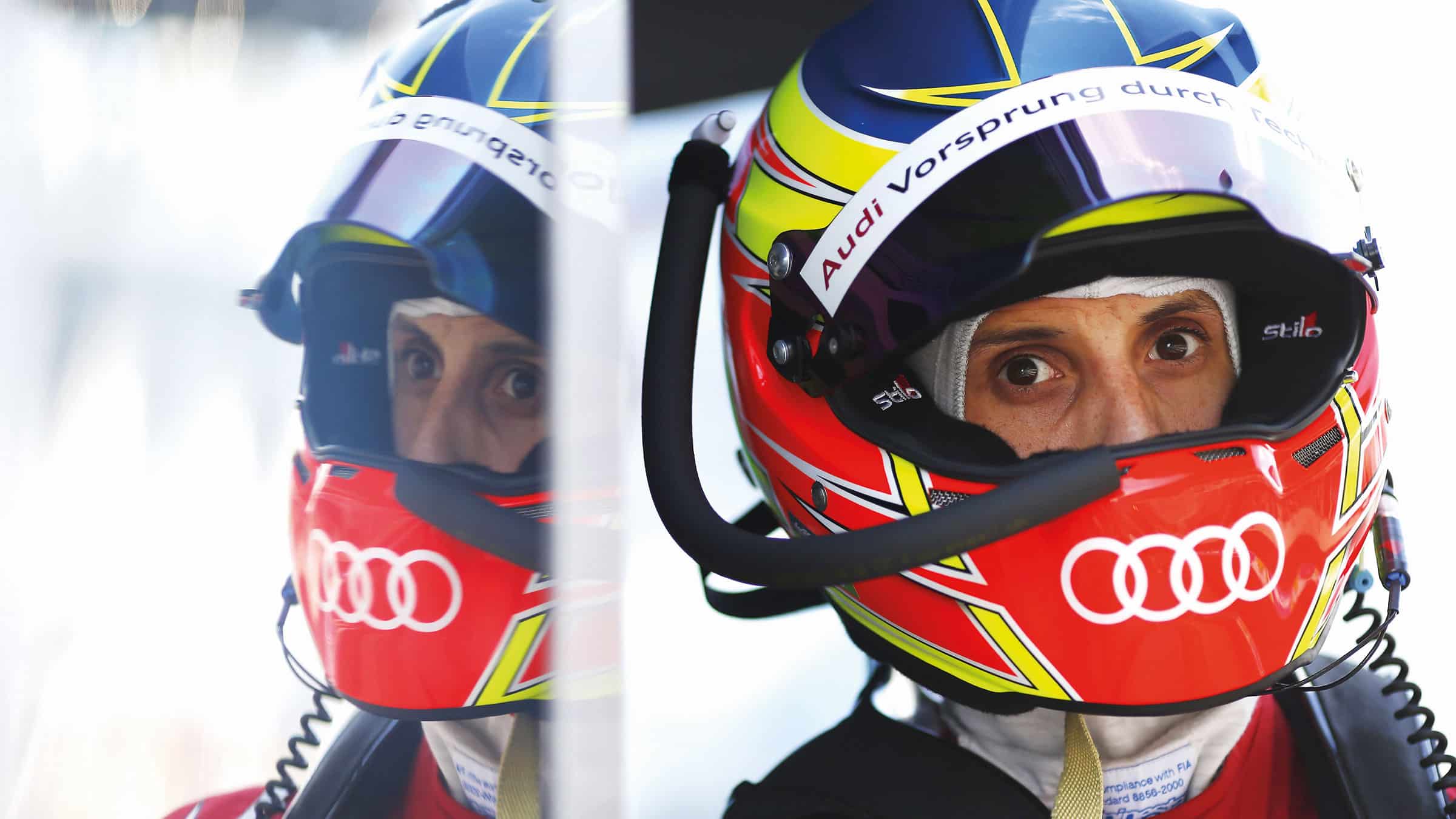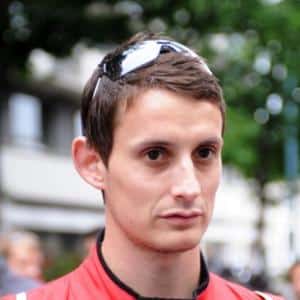Oliver Jarvis: Underrated, understated but highly motivated
In the pantheon of great British racing drivers, few would perhaps list Oliver Jarvis as highly as he deserves. Damien Smith caught up with an endurance racing mainstay who has largely eschewed the glare of the spotlight
Richard Davies
Racing drivers tend to be a selfish breed. Actually, it’s common in most sports: to be the best, at your best in any given field, takes total focus and dedication, sometimes to the detriment of a wider perspective. And the truth is, it’s not always an attractive trait.
Yet there are exceptions to the rule. In endurance sports car racing, a delicious tension exists at its heart: to be truly successful the natural ego of the fiercely competitive individual must often be subjugated for the greater good of the team. No matter how quick or experienced you are you don’t always get to qualify, you don’t always get the fresh set of tyres for your stint, you don’t always get to start – or take the glory at the finish. No wonder single-seater aces often take a while to settle, and some never do. But for a select few, who combine platinum-grade ability with an unlikely selflessness, it’s a mix that keeps them gainfully employed for years. The intelligent engineers, team managers and owners love them.
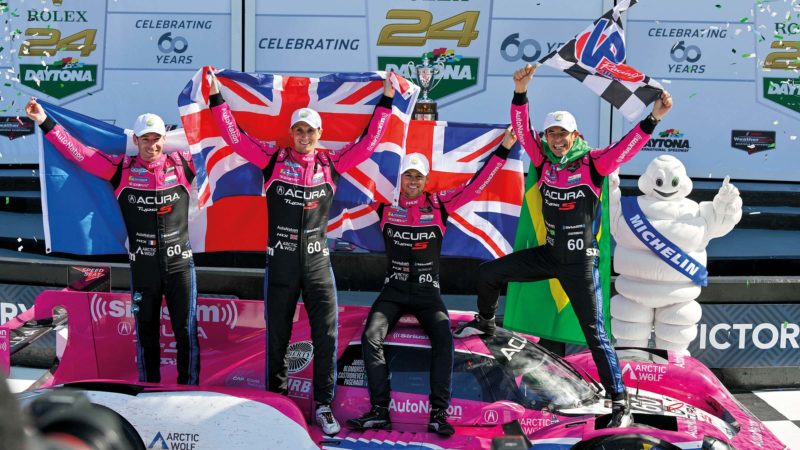
Daytona victory set Olly Jarvis and Tom Blomqvist up to become IMSA champions last term
Getty Images
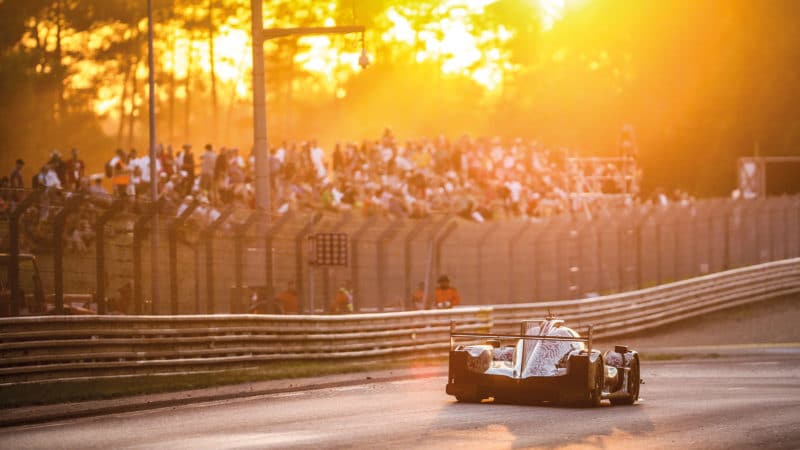
That remarkable LMP2 result for Jackie Chan DC in 2017
Getty Images
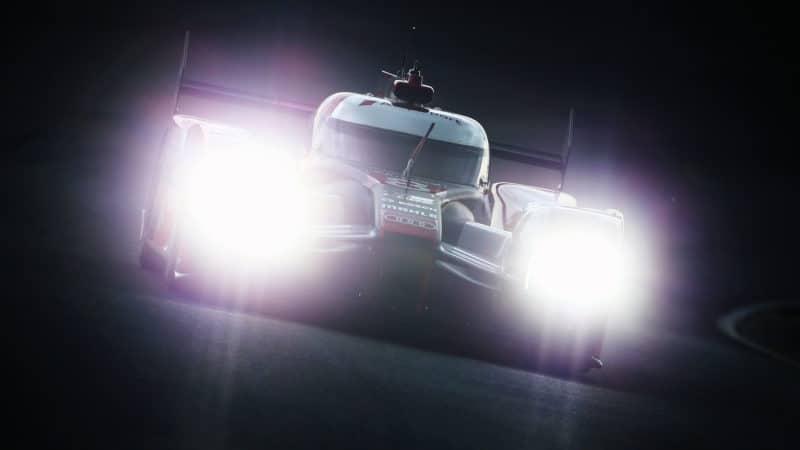
Jarvis was part of Audi’s LMP1 crew for five years
Getty Images
Oliver Jarvis is among their (small) number. Yet somehow you can’t shake off a sense that he’s underrated and overlooked. Is it his age? He’ll hit 40 early next year. But that’s not really old, particularly today when drivers in all codes are increasingly racing harder for longer. It sure isn’t for his lack of experience. He’s raced everything from lairy A1 GP single-seaters to Super GTs in Japan, powerful DTM racers in Europe to sophisticated LMP1 hybrid thoroughbreds from his years as a factory Audi Sport driver.
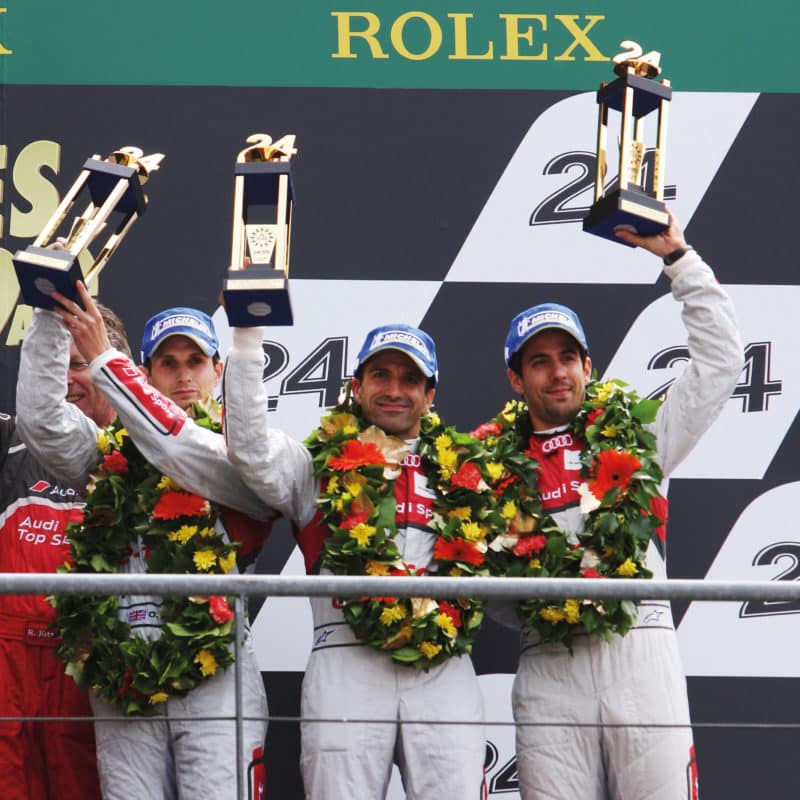
A second Le Mans podium in 2013
Getty Images
As for results, he’s collected some of the biggest prizes around: an LMP2 Le Mans class win was a landmark in 2017, then last year he added a cherished overall success at the Daytona 24 Hours, followed by a cumulative major title as he and team-mate Tom Blomqvist were crowned IMSA SportsCar series co-champions in the USA’s top-flight enduro category. There are a lot of good drivers who’d give their eyeteeth for such accolades.
“I hate the self-promotion side. I’d rather go to the track and do my job”
No, the underrated thing has to be down to something else. Perhaps it’s his personality. Perhaps he’s too modest. “I hate the self-promotion side,” Jarvis admits. “It’s something I can’t do. I’d much rather go to the track, do my job and as long as the team and my team-mates respect what I’ve done then I’m fine. I don’t need the outside recognition.”
The thing is, in this cut-throat world that’s not entirely true. Has he undersold himself over the years? “Potentially. But would I do it differently? Probably not.”
Just as well, then, that he’s got a master of the dark art to do it for him. Jarvis is managed by Johnny Mowlem, a self-confessed ‘hustler’ who carved out his own respected 20-year career in the endurance racing arena. Today, Mowlem focuses on his thriving Red River Sport mentoring and coaching agency, but he only manages one top-line professional driver, very much by choice. He and Jarvis are something of an odd couple, mainly because they are so different. But that’s also why this driver-manager relationship works.
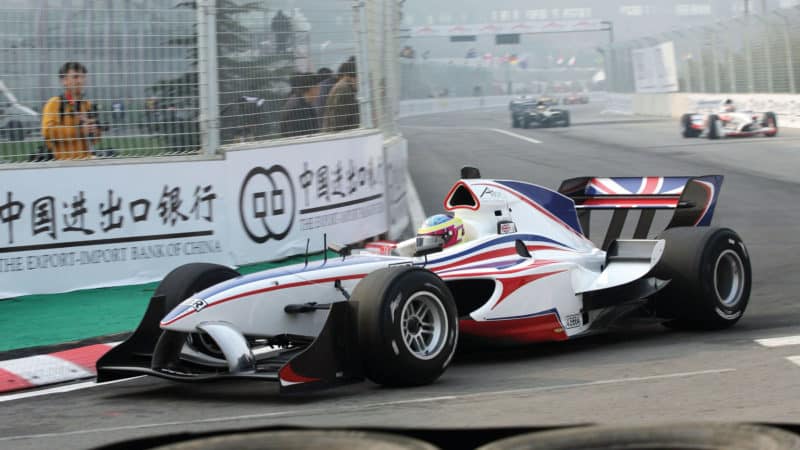
In A1 GP action for Team GB at Beijing in 2006
Getty Images
Mutual friend Allan McNish suggested they get together, when Jarvis was left high and dry by Audi’s LMP1 withdrawal at the end of 2016. Mowlem raced against Jarvis’s dad, Carl, back in his Formula Ford days, but didn’t know Olly well – at all. Yet something clicked. Mowlem helped Jarvis find a landing space in LMP2 and a year after scoring a third Le Mans podium with Audi, Olly somewhat ironically scored what is so far his best result at the 24 Hours: second overall and first LMP2 car home, with Jackie Chan DC Racing. He and Mowlem have stuck together ever since, without the need of a contract.
“Olly is an incredibly good team player,” says Johnny. “So much so he is willing to allow others to have their moment, which is unusual in a racing driver. Actually that sometimes works against him. He doesn’t blow his own trumpet. When I stopped racing professionally I probably had 20 drivers calling to ask me to manage them. The only person I took on was Olly because I knew I could make a difference as I’m reasonably good at promotion! Olly just quietly gets on with the job. But then people often don’t notice the job you’re doing. I think that’s why people often forget Oliver Jarvis is a top British racing driver. But he most definitely is.”
Mowlem pulls out a remarkable statistic to support that statement. Beyond series titles, the British Racing Drivers’ Club Gold Star points table is another handy indicator of success across a season for homegrown talent. Top of the marks last term was Lewis Hamilton, followed by Mercedes-AMG team-mate George Russell – and third was one Oliver Jarvis.
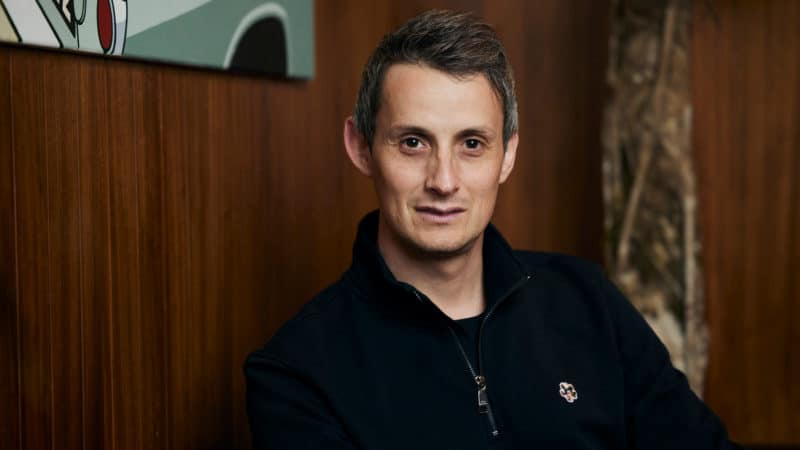
Jarvis at The Bluebird, Chelsea, earlier this year
Richard Davies
In 2022 he combined a campaign in the World Endurance Championship with United Autosports in LMP2 with a top-division DPi attack on IMSA with Meyer Shank’s Acura squad. Jarvis had bags of experience in the US series from his four years driving for Mazda, but now scored after previous near-misses with a team that had recently struggled. In the wake of the landmark Daytona victory, he and Blomqvist claimed five consecutive second places. Then at the final round, Petit Le Mans at Road Atlanta, Blomqvist and Jarvis – joined by Hélio Castroneves for the 10-hour enduro – clinched the title with a hard-fought victory.
“Daytona was very special, especially because it’s probably one of the few years I’ve gone in with no expectation, joining Meyer Shank after what was a very difficult year for them,” says Jarvis. “I thought it would probably take at least half a year to really start getting results. To win on our debut, with myself and Tom new to the team, was incredible. Thereafter, it was really strange. There were three or four races where we were looking good for a victory and a late safety car or something occurred, which meant we didn’t quite win. Normally, you’d be really pleased with second but we came away disappointed on four or five occasions. Still, those second places laid the foundation to win the championship. But it also meant when we did get in the lead at Petit Le Mans there was no way we were going to give it up. As soon as Tom got ahead with an hour to go I knew we’d win it. He just wasn’t going to let it happen again.”
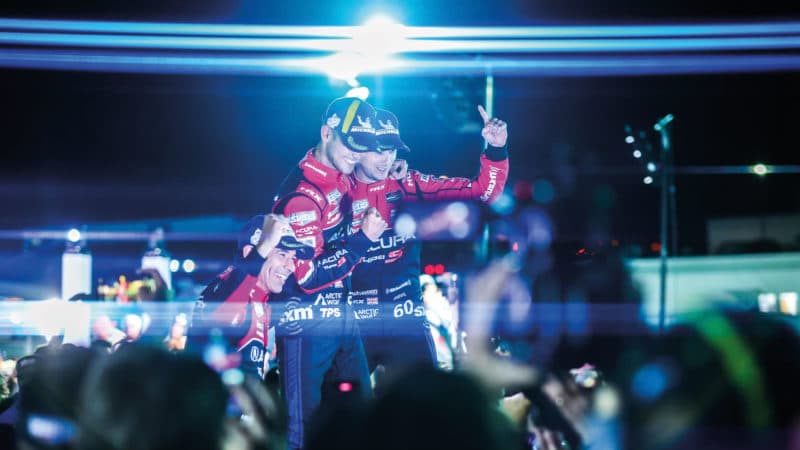
Victory and a title in Atlanta with Blomqvist and a guesting Hélio Castroneves
But come Daytona this year, Jarvis found himself back in an LMP2 car as Blomqvist and Meyer Shank racked up a second consecutive victory (even if it was later tainted by a tyre pressure cheat controversy). But why wasn’t Jarvis in the car? “Good question,” he smiles. “Things just didn’t quite work out towards the end. They were stalling a little bit on what to do for the following year, and I took the opportunity to commit to United Autosports in the WEC for 2023. But, that meant I couldn’t do two of the American races.”
Calendar clashes between the WEC and IMSA? That’s not too clever, especially given the much-heralded accord that supposedly exists between the two these days.
“You can underestimate what Olly did in terms of bringing the team on last year,” says Mowlem, pitching in. “Tom is a young guy who has got some momentum at the moment, but the way they worked together shouldn’t be underplayed. The team had a renewal clause and I was in a difficult position: they hadn’t taken up the option bang on the date that was open, we had this opportunity to go elsewhere and we couldn’t do both. We had to make a decision. I think Tom would have dearly loved to have Olly back as a team-mate.”
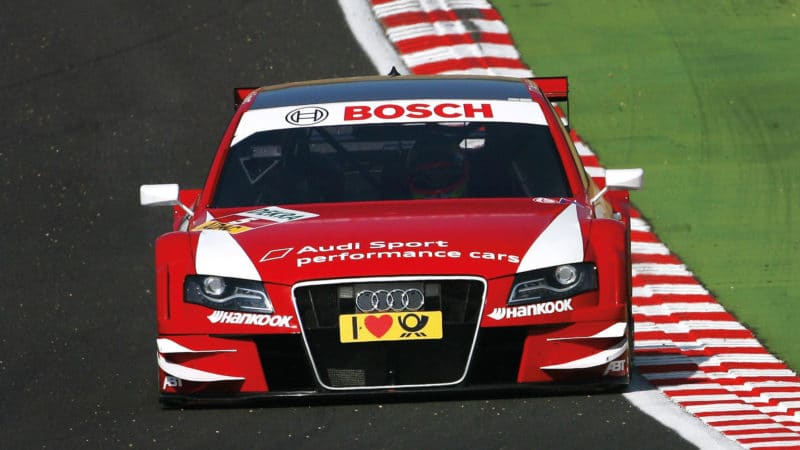
DTM days with Audi, 2011
Getty Images
“I had a really enjoyable season with Meyer Shank and I look back with fond memories,” says Jarvis. “But things don’t always work out regardless of results. There’s no animosity whatsoever. It ended well, I saw the team in Daytona and congratulated them. But it all worked out well for myself with WEC.” He is at least back with Blomqvist at United for non-clashing world series races and – predictably – is generous in his praise for his high-flying team-mate, who is the son of ‘the original Stig’ (as in the 1984 World Rally champion, not Perry McCarthy!). “I’ve already done the Asian Le Mans Series with United this winter and I’m also doing the European Le Mans Series too,” says Olly. “I have a great season ahead.”
“For me, it’s not just about driving the car – I love that competition”
Still, it must have tweaked to miss out on another Daytona win, especially at the dawn of the LMDh/GTP era. “It’s always nice to be in the top class,” Jarvis admits. “And certainly because they’ve reduced the power of LMP2 this year, which shows in driveability against the P3s and GTs. I’m happy in P2 because there is a huge amount of competition. For me it’s not just driving the car – I love that competition. No doubt there’s some incredible drivers in LMDh, but when you’re looking at P2 it’s operating at a very similar level.”
Jarvis is relishing his senior role in the multi-series United effort – and he’s already more than justified Richard Dean’s decision to re-sign him for the WEC assault. First, there was a fine P2 pole position at the Sebring 1000 Miles, only for victory to be lost by a freak reason for retirement while Josh Pierson was in the car: a camera fitted by the organisers came loose and contrived to trigger the engine kill switch from inside the cockpit. But at the Algarve circuit near Portimão, Jarvis put that pain firmly in the past by securing the victory, calling on all that vast experience when he lost the pit-to-car radio. Reading a pitboard took him back, but he was also making fuel usage calculations on the hoof to bring the ORECA home. Exactly why Dean cherishes him.
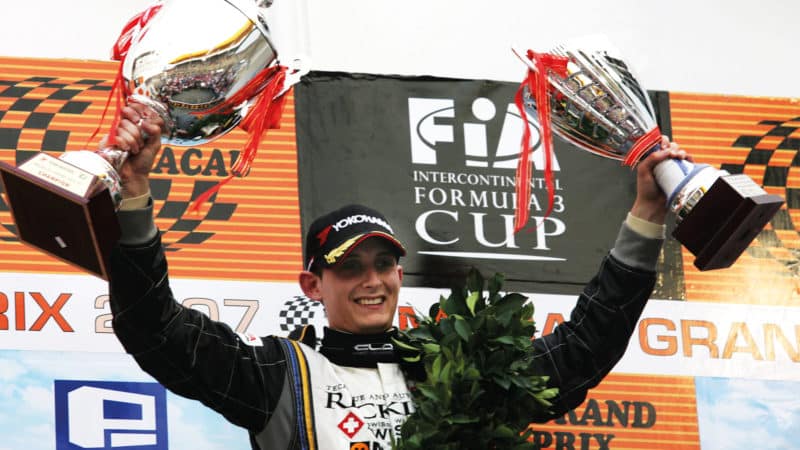
Macau F3 Grand Prix victory in 2007
Getty Images
The Spa 6 Hours brings us right up to date ahead of Le Mans. This time Blomqvist stuck their ORECA on pole and built up a big lead – which was scrubbed out by a safety car. Jarvis was back in front when he handed over once more to Blomqvist, but WRT won a late pitstop race, leaving Olly and co disappointed – but still second. It all bodes well for the big one.
But come on: what about getting back into the top class? United boasts a world-class facility near Leeds, but its next-step graduation cannot be guaranteed, as Dean admits. “If United were to go LMDh I’d like to think I’m in a strong position, but it’s a long season ahead,” says Jarvis. “My focus now is really on getting results this year. With Josh Pierson in his second year [the promising American is just 17] the aim has to be to win the championship and win Le Mans. But as always with P2, it’s such a strong class.”
What about the age question? Is knocking on 40 harming his hopes of another crack at an overall Le Mans win – the gong every serious sports car driver covets? “For me it’s not an awkward question because there’s no hiding your age,” he says. “It comes up, but I don’t feel 39 at all. I go out and train with the younger drivers. I’m as fit as I’ve ever been. Age will eventually catch up with everyone, but I feel as good as I’ve ever felt in a race car.”
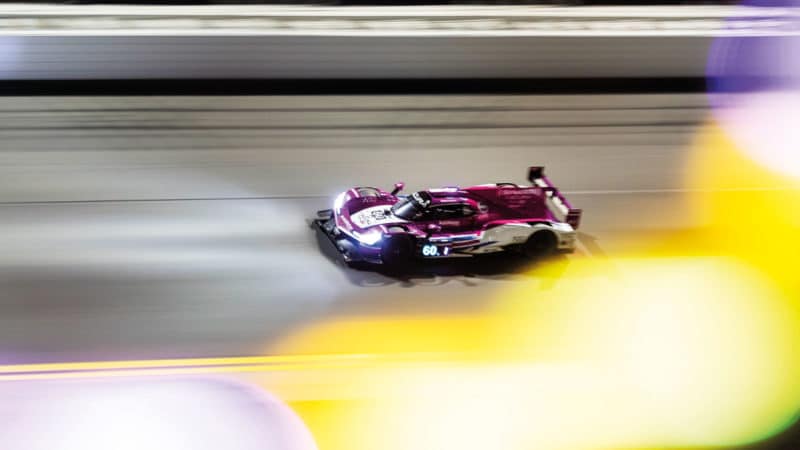
Good times in the Meyer Shank Acura in 2022
Getty Images
There is another perception that often fails to show the bigger picture, based on what both Jarvis and Mowlem claim is a surprisingly short-sighted trait among some owners and team managers. “One of the things that has changed in my time is [the focus on] data averages, like top 10 fastest laps,” says Jarvis. “So many drivers are only worried about where they are in that ranking. Actually, it’s not about that, it’s about stint average. It’s about all your laps. Your 20 slowest laps are way more important than your 20 quickest. The sad thing is there are team bosses and driver fathers that live by this list of top 10 fastest laps. But this is sports cars: you do 20 quick laps and destroy your tyres, so what about the other 40?”
“Your 20 slowest laps are way more important than your 20 fastest”
Perceptions, accurate or otherwise, can do so much to shape racing drivers’ careers. Whatever comes next for Jarvis, he knows what he still wants from motor sport. “I want to keep racing while I still enjoy it at a competitive level,” he says. “I don’t know if I’ll be able to step back and do it for fun. I’m not sure I have that personality trait because for me, racing is competition. I’d like to go back and try and win Le Mans outright. What I don’t want is to be driving a race car at the top level and not be competitive. I’d much rather stop when that point arrives. It could be five years or 10. But I’m so self-critical I will know.”
He might not be much cop at the hustle, but Jarvis is a compelling case that actions still speak louder than words. He’s far from done with this game yet.
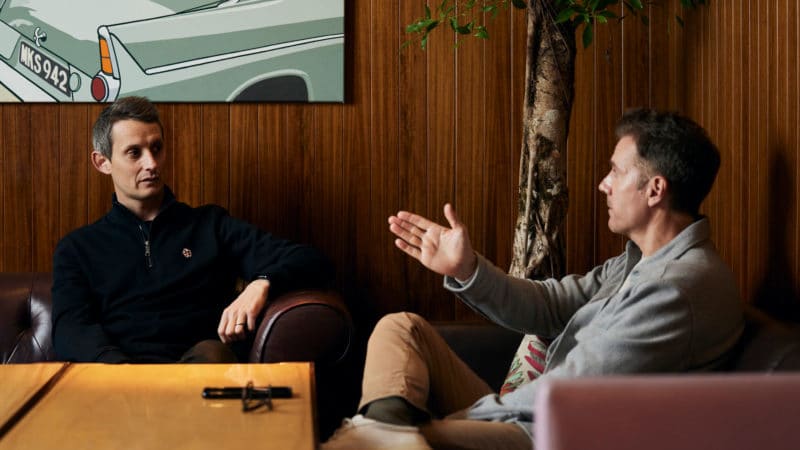
Jarvis and manager Johnny Mowlem are two opposing personalities working in harmony
Richard Davies
